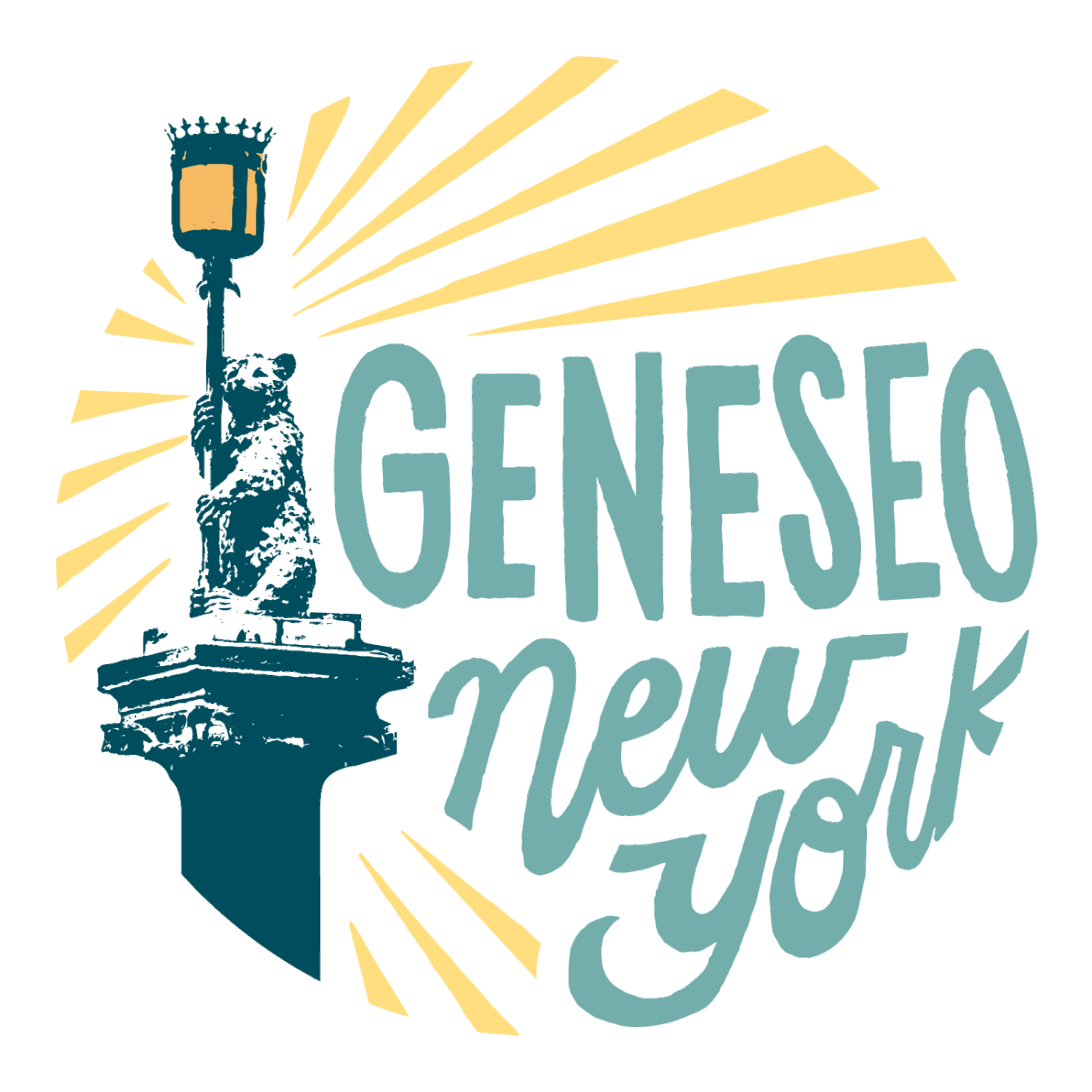JOIN US FOR SIGN UNVEILING IN GENESEO’S VILLAGE PARK. Acknowledging Seneca Land Rights, Recognizing Past Wrongs, and Cultivating Values for a Sustainable Future. This event is free, but please RSVP to paulkreher@gmail.com.
Two outdoor public signs will be unveiled at Geneseo’s Village Park (intersection of Main Street and 20A) on Saturday November 2nd, 2024, at 1:00pm. Thanks to a grant from the Genesee Valley Council on the Arts (GVCA) awarded to the Association for the Preservation of Geneseo (APOG), new interpretive signs will be erected in the Park that acknowledge Seneca people and culture in the Genesee Valley, both past and present. With inspiration from community member Paul Kreher, this project engaged a collaborative research team of exhibit design consultant, representatives from Indigenous communities, community members, and the Livingston County Historical Society to create two interpretive signs.
The first sign engages the reader to learn more about how to cultivate values for a sustainable future based on Indigenous ways of knowing, such as the Seventh Generation Philosophy and the Thanksgiving Address, which embodies gratitude, respect, and reciprocity. The second sign acknowledges Seneca (Onödowá'ga') land rights, past wrongs against them, and rights stolen from them, and suggests ways to be an ally to Seneca people in the present and future.
The Village Park is located near to the site of the signing of the 1797 Big Tree Treaty, whereby the Seneca were dispossessed of their homeland and displaced to eleven reservations. After the treaty, the US Government continued to coerce the Seneca to leave their lands, and today only four of the original eleven reservations remain: Allegany, Cattaraugus, Tonawanda, and Oil Springs.
The signs will be unveiled during National Native American Heritage Month.
The goals and objectives for this community project are multi-fold. First, the project acknowledges that Indigenous people were the original stewards of the land on which we now live. The second goal is to educate and invite the community to think about what we can learn today about the history and culture of those who called this land their home long before usA third goal is to make this project accessible to as many people as possible and to comply with ADA standards. The Park is frequented by thousands each year who will have access to the information presented on the signs. With upcoming additions to the signs, the community will be able to hear the Seneca language, which is making a resurgence, as they listen to audio components of the exhibit and additional information about Seneca culture and values
Lastly, of utmost importance to the project, is the goal to educate the community about Native American land dispossession. More and more communities in the United States and Canada are incorporating Land Rights Acknowledgements into public programming and spaces. As examples, SUNY, our community neighbor, begins programs with a Land Rights Acknowledgement, and the Livingston County Museum is currently developing a Land Rights Acknowledgement to accompany special imagery near the entrance of the Museum. Some might argue that a simple acknowledgment may not be enough; however, it is an important starting point.
Traditionally, Indigenous Peoples are an underrepresented group, and much of the history of Indigenous communities is unknown by those now living on their ancestral land. But the Seneca people still survive today as a sovereign, independent nation, maintaining its own distinct laws, language, customs, and culture.
In addition to raising awareness of Ingenious history in our community, this project aims to awaken a community understanding about how the collective “we” have lost touch with Indigenous wisdom that could be a critical guide to combatting global warming. “Our relationship to the Earth is broken and must be restored. If the land is our teacher, we have to show up for class (Robin Wall Kimmerer).”

